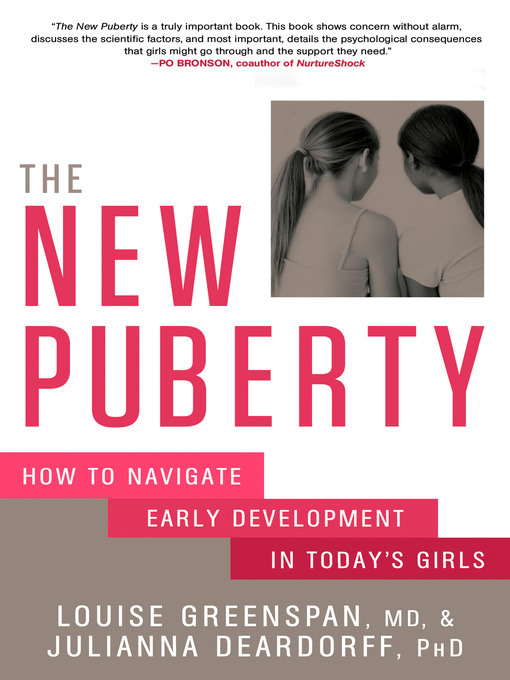The New Puberty
How to Navigate Early Development in Today's Girls
In this reassuring and empowering guide, Louise Greenspan, MD, and Julianna Deardorff, PhD—two leading experts on the root causes and potential consequences of early puberty in girls—deliver vital advice on how to prevent and manage early puberty. They explain surprising triggers—from excess body fat to hormone-mimicking chemicals to emotional stressors in a girl’s home and family life—and offer highly practical strategies, including how to limit exposure to certain ingredients in personal care and household products, which foods to eat and which to avoid, ways to improve a child’s sleep routine to promote healthy biology, and more.
The New Puberty is an engaging, urgently needed road map to helping young girls move forward with confidence, ensuring their future well-being.
-
Creators
-
Publisher
-
Release date
November 21, 2014 -
Formats
-
Kindle Book
-
OverDrive Read
- ISBN: 9781623363437
-
EPUB ebook
- ISBN: 9781623363437
- File size: 474 KB
-
-
Languages
- English
-
Reviews
-
Publisher's Weekly
August 18, 2014
A growing number of young girls, some as young as seven-and-a-half years old, have been entering puberty early. This accessible volume from clinical psychologist Deardorff and pediatric endocrinologist Greenspan examines the phenomenon’s causes and cases and offers strategies for girls and their parents to understand, manage, and possibly delay adverse physiological and psychological effects. Identifying three main “puberty prompters”—obesity, exposure to xenoestrogens and other chemicals that affect the hormone system, and social and psychological stressors—the authors suggest lifestyle changes including healthy nutrition, limited exposure to synthetic chemicals in household and beauty products, and the creation of a supportive family environment. They also discuss when medical intervention is appropriate and how to avoid future social and medical repercussions. While the media has, perhaps, sensationalized this topic, the good news is that while breast development, mood swings, body odor, and other signs of puberty may be evident in girls younger than in previous generations, the whole process now lasts longer, ending with menarche (the onset of menstruation) at an average age of 12 and a half. Urging parents not to “have the talk” with their daughters but rather to start an ongoing conversation as soon as possible, the authors share an abundance of action-based steps that should allay the fears of many panicked moms and dads and help girls to grow and thrive.
-
Formats
- Kindle Book
- OverDrive Read
- EPUB ebook
subjects
Languages
- English
Loading
Why is availability limited?
×Availability can change throughout the month based on the library's budget. You can still place a hold on the title, and your hold will be automatically filled as soon as the title is available again.
The Kindle Book format for this title is not supported on:
×Read-along ebook
×The OverDrive Read format of this ebook has professional narration that plays while you read in your browser. Learn more here.

